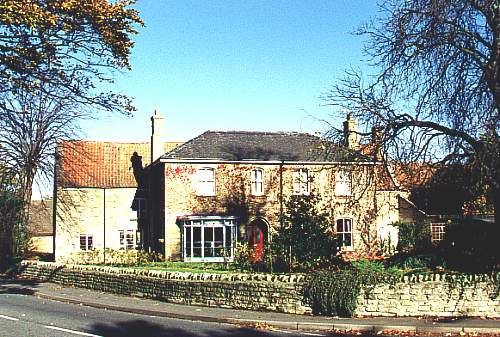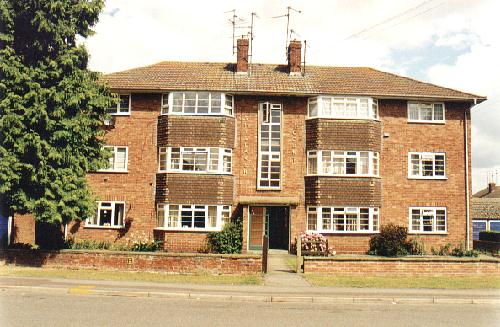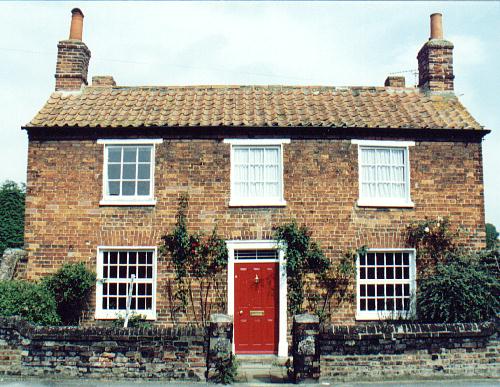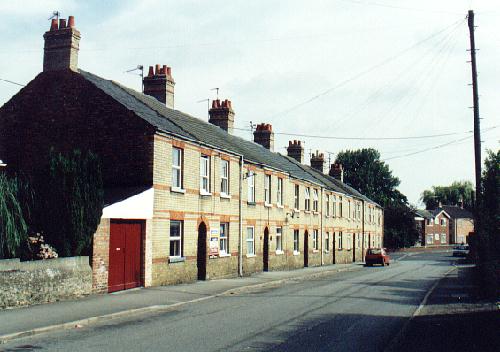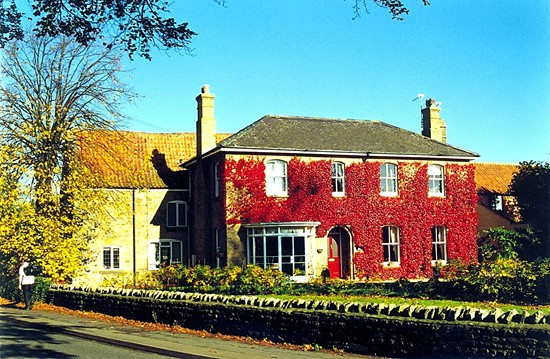|
The Austerby
The Austerby is one of the oldest parts of Bourne, the name being derived from the Old Norse austarr, meaning more easterly, and Old Danish by, meaning a farmstead or village. Early mentions include Austrebi (1167, Pipe Rolls), Oustreby (1206, The Lincolnshire Assize Rolls), Oustirby (1327, The Calendar of Charter Rolls) and 1354 (Additional Rolls in the British Museum) meaning the more easterly farmstead in relation to Bourne. The most imposing property in the Austerby is the Manor House which stands at the junction with South Road in a prominent position on the southern approach road to the town and has a prospect that is both elegant and spacious. It dates from the early 17th century but the frontage was Gothicized during Victorian times and a more historic building, the Old Bakehouse which has a most distinguished pedigree, is located at the other end of the street.
One of the larger modern buildings in the Austerby is Shillaker Court, a block of six council flats built in the post war years in the art deco style that was popular thirty years before and still much in evidence in London suburbia. An old property known as Shillaker House, that was demolished to make way for this local authority development, had been the home of a prominent South Lincolnshire farmer Mr Harry Shillaker. Shillaker Court was erected by the local authority between 1954 and 1956 together with another housing development in nearby St Paul's Gardens, a total of 42 flats, all of which are still in use today. The railway system that came to Bourne during the mid-19th century turned the town into a rail junction where two lines crossed and one of them, to Spalding and then into Norfolk, crossed the Austerby and evidence of it remains today. Number 15, a substantial red brick building, was an inn with a name bearing witness to the emergence of a new era, the Railway Tavern. The property was built in 1720, and so the hostelry probably had another name before the coming of the railways. It still contains many of the characteristic features of an old inn such as a door with a keyhole only on the inside, a well in the yard and the old brewery in an outbuilding at the back.
The public house closed in 1901 and has been a private residence ever since. Its demise as an inn was probably due to a lack of trade caused by competition from other hostelries in the town because the railway line did not close to passenger traffic until 1959 and freight in 1965, virtually ending the railway age for Bourne.
One of the distinctive features of the Austerby is an attractive terrace of yellow brick and blue slate cottages, built in 1900 and still providing serviceable family homes today. Further up the street is a tiny green hut at the end of a paved pathway. This is the modest home of the Bourne detachment of the Lincolnshire Army Cadet Force where boys and girls aged from 14 to 18 who aspire to a military career are given some early training, or they attend merely because they like the soldier's life. The drill hut stands on the route of the old railway line that crossed the road at this point.
REVISED FEBRUARY 2015 See also The Old Bakehouse Railway gatehouses The Austerby in past times Harry Shillaker
Go to: Main Index Villages Index |
